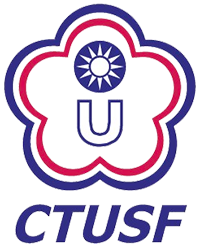Sports & Exercise Research Volume 23 Number 4
Author:Sheng-Kuang Wu ; Kuan-Chen Wu
Period/Date/Page:Vol. 23 No. 4 (2021 / 12 / 31) , Pi - vi
DOI:10.5297/ser.202112_23(4).0000
High Performance in Para Sport at the Tokyo Paralympic Games: Role of Sport Science
Abstract:Due to the severity of the coronavirus disease 2019 (COVID-19) sweeping across the world, the International Olympic Committee and International Paralympic Committee decided to postpone the 2020 Tokyo Olympic Games and Paralympic Games to July and August 2021, respectively. These 2 games were recognized as the highest sport performances and also represented the values of fearlessness and challenged the limits of humans. Around 11,000 athletes competed in 33 sports and 339 medal events at the Tokyo Olympic Games (International Olympic Committee, 2021) and around 4,400 para athletes, including physical impairment (PI), visual impairments (VI), and intellectual impairments (II) competed in 22 sports and 539 medal events at the Paralympic Games (International Paralympic Committee, 2021). All athletes either in Olympic or Paralympic Games, passed through several tough tasks to qualify for the internationally highest events (Wu, 2021). Among those, Taiwan had 68 athletes, who qualified for 18 sporting events at the Olympic Games and 10 para athletes, who qualified for 6 sporting events at the Paralympic Games. Several research studies have indicated that participating in sports training brings positive interests to people with impairments in physical and mental aspects, ability to fit into society and overall lifestyle. Longtime back (1950s) Western countries have incorporated physical activity into rehabilitation for people with impairments. Over the past decades para sport has grown drastically popular, and many para athletes have considered the Paralympics as a lifetime goal (Tweedy & Vanlandewijck, 2011; Wu & Williams, 2001). The knowledge of the general public and sporting professionals, who have not looked into para sport and Paralympics, may only be the name itself. Sporting events for athletes with impairments in Taiwan have rarely been televised (The Tokyo Paralympic Games are the first-ever professional broadcast for para athletes), leading to many misconceptions of para athletes. These mistaken views include "people with impairments do not need to play sports" and "sports might further traumatize the disabled." This manuscript aimed to a establish basic understanding of sports science to help para athletes to improve their performance in their pursuit of outstanding competition. Application of Right Methods in Complicated Para Sport: Before starting to instruct people with impairments, establishing knowledge on their features, like the type of impairment (PI, VI, and II), severity of impairment, and usage of assistant devices is important. We may figure out which sports are available for the person, the classifications of the sport, their residual functions and limitations of activity, and also consider the sport-specific demands, including abilities, skills, and tactics. The complexity of analyzing and integrating these conditions makes the experts of sport science in para sport in need of constantly keeping up with the latest research studies (Baker, Lemez, Van Neutegem, & Wattie, 2017; Tweedy & Vanlandewijck, 2011; Wu, 2021). Despite the difficulties in reaching the specialty, it is not impossible to achieve certain levels. Experiences from the para athletes may be great lessons for beginners in para sport science. By modeling the para athletes and coaches, and integrating sport science can provide appropriate research to adapt to the special needs of para athletes. Challenge and Dilemma of Para Sport: Most research papers are published by the developed countries, such as Western Europe, North America, and Australia. This is probably because sport science in para sport is not in the mainstream of the current international sport science field. The correlation among gross national income, human rights, and the development of para sport can be seen. The formula of success in able-bodied athletes have long been cemented in evidence-based practices as physical prowess, physiological and psychological characteristics, high level and good quality of training, talent development and long-term competition opportunities, professional sport science support, and the managing team (Baker et al., 2017). However, in athletes with impairments, there are several issues to be disclosed. Aside from wealthy countries that train their athletes with attention, many developing countries are still far behind. Some countries can only request a wild card for the Paralympic Games, with their sights set on merely participating, not competing for medals and reaching high performance. The most complex aspect of para sport is the sport-specific classification system. The system allows the athletes to compete according to their impairment type, severity and sport mobility, functional abilities, and activity of limitations. The complexity and tough learning process have long been a barrier that has kept sport science professionals wishing to join the para sport scene away (Tweedy & Vanlandewijck, 2011; Wu, 2021). Though advanced countries in para sport science, some famed universities have established solid master and Ph.D programs that include conclusive studies in this area. For example, No. 1 ranked Loughborough University, UK of the 2021 Quacquarelli Symonds (QS) ranking of sports-related subjects, No. 2 ranked The University of Queensland, Australia, No. 9 ranked University of Alberta, Canada, and No. 23 Catholic University of Leuven, Belgium has well known in adapted physical activity and disability sport (QS World University Rankings, 2021). Hopefully Taiwan can emulate the successes of these countries and universities, and educate the professionals systematically, leading to a better research environment and popularizing para sport or related studies and applications. Finally, we concluded that the sports for people with impairments should be encouraged and assisted, the outstanding achievements reported and rewarded, and professionals who teach and train para sports should be supported and recognized. If Taiwan can integrate the "theory to practice" in this field, the success in para sport can be expected in near future. (Full text)




